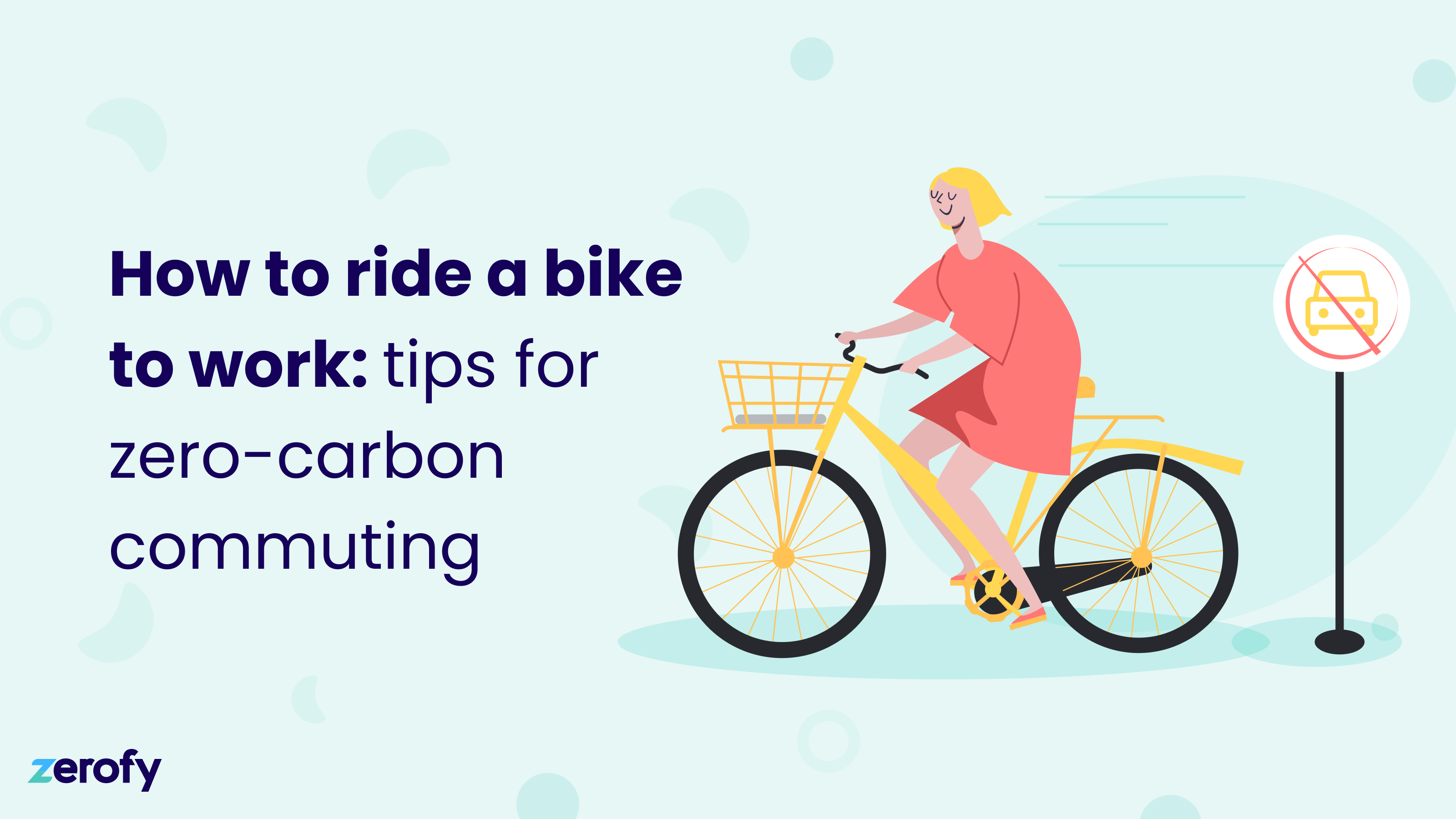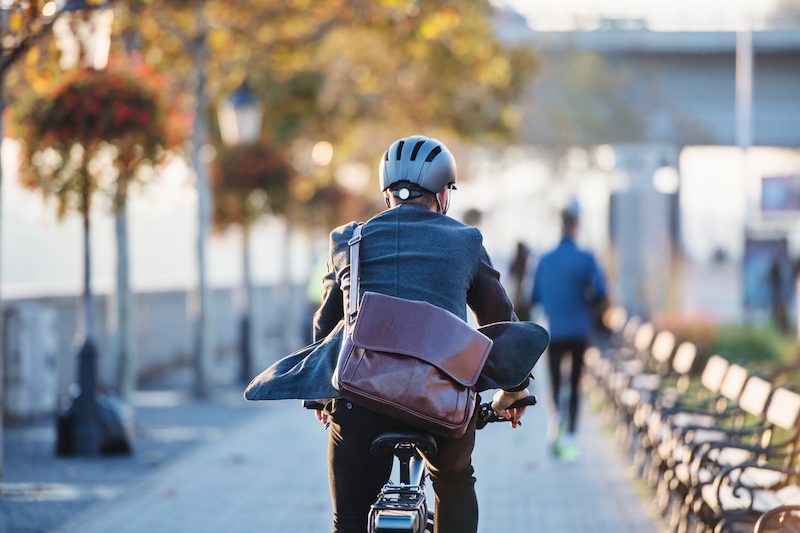
Among the many shifts you can make in your life to decarbonise, biking more is one with so many noticeable benefits, ranging from a lower impact on the environment to cost savings to health upsides. If you’re physically able to bike, and live a reasonable distance from your place of work, beginning to bike commute is a fantastic way to reduce your emissions.
Car commuting is a major source of transportation-related emissions. In the UK, accounting for all car propulsion and fuel types, car commuting created 17,418,125 tCO2e GHG emissions in 2019. To put that number in perspective, the UK would need 22.7m acres of forest to absorb all of that CO2—but the UK only has 7.9m acres of forest coverage in total (Source). A recent study from The University of Oxford found that replacing just one car trip a day with cycling could lead to a carbon footprint reduction of about 0.5 tonnes per year (Source).
In addition to the CO2 savings, bike commuting is also a fantastic way to build a workout into your travel from work. Plus, it can reduce your car-related costs, like filling up with fuel, and potentially allow you to go longer between car services (although there are some expenses associated with biking, the largest being a purchase of a bike).
Read below for our top tips for starting to ride a bike to work (and, if you work remotely, you can still apply these tips to your efforts to bike more, like for running errands).
Start small
As with building any other habit, you don’t necessarily need to be biking into work five days a week. For the first month, try bike commuting one or two days a week. Check the weather forecast early in the week and select days with favorable weather. You don’t need to start your bike commuting journey pedaling in the rain! This will allow you to ease into biking to work. If you don’t own a bike yet and live in a city with a bike share program, consider using one of their bikes to make sure you enjoy two-wheeled commuting before investing in your own.
Choose the right bike
So, you’ve dipped your toe into bike commuting and are ready for your own bike! A good bike can make all the difference in your commuting experience. You don’t necessarily need the fanciest bike out there, but you want something that’s reliable, comfortable, and fits your needs. Consider what features are important to you. Do you want a super light bike because you’ll be lifting it up your apartment stairs? Do you need something foldable to help with space constraints? Is an e-bike a better fit for you than a conventional bike? Going to chat with the staff at your local bike shop can be a great way to wrap your head around options and considerations.

Credit: iStock
Plan the bike route you’ll take to work
Before you hit the road, plan out your route. Look for bike-friendly roads and trails, and avoid busy streets without bike infrastructure. If there are other cyclists in your office, ask them for suggestions on what route you should take. You could even ask if you could tag along on their bike commute one day if your commute is similar. You can also consider using a mapping app or website that takes into account bike routes, like Google Maps or Strava, to find the best way to get where you need to go. Make sure to also consider the weather and the time of day you’ll be riding.
Track your mobility emissions in the Zerofy App. Download now!
Get the right gear
You don’t need a lot for bike commuting, but a few key items will keep you safe and make it more enjoyable.
-
A properly fitting helmet
-
Front and rear lights and reflectors to make yourself as visible as possible
-
A back fender to deflect moisture on the road from spraying you as you ride
-
A decent raincoat (which can help with wind as well)
-
A sturdy bike lock (consider a cable lock that can wrap around your frame and wheels if you have quick-release wheels)
-
Gloves for chilly or windy weather
Learn the road rules for cyclists
The road rules for cyclists will vary depending on where you live, but a good rule of thumb is to conduct yourself like a vehicle (i.e. avoid weaving in and out of traffic, don’t blow through stop signs, and always stop for pedestrians). There are also signals that you can learn that allow you to communicate to motorists whether you are turning left or right, a valuable thing to know given bicycles don’t have indicators. In many countries, the Ministry of Transport or equivalent should have information on their websites. If not, try asking for resources at your local bike shop.

Credit: iStock
Get to know other cyclists
Biking can be more fun and less intimidating when you have a community of fellow riders to support you. Look for local biking groups, meetups, or clubs, and consider joining social media groups dedicated to biking. You can learn from experienced riders, get tips on gear and routes, and even find new riding buddies.
How the Zerofy app can help
One of the coolest features in the Zerofy app is that it automatically tracks and classifies your mode of transportation. This means if you bike to work on Monday and drive to work on Tuesday, your distance and associated CO2 emissions will be captured right in the app. By using the Zerofy app as you begin your bike commuting adventure, you’ll be able to see in real-time the impact that biking is having on your carbon footprint. It’s a great, hands-off way to see how the shifts you are making are contributing to a difference in your overall household carbon footprint. Check it out below!